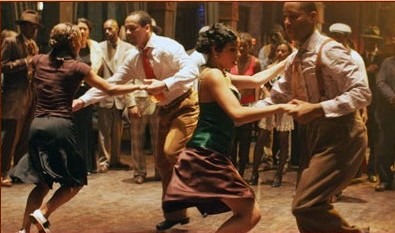
Lindy Hop ROCKS!
I am a Lindy Hopper. Although I continually want to improve my dancing, I’m very happy with how far I’ve come in the last two years and am eager to continue. But I would not be where I am today without a lot of help from a lot of people. That commitment to me as a part of the Lindy Hop community is built through the generosity of knowledge and talent from other dancers and the interpersonal nature of the dance itself.
One of the surprising aspects of Lindy Hop is that in the beginning, it’s not your dancing, or semblance of, that keeps you coming back, but the people. As eager as you are to learn, the teachers are even more eager to help you learn. Even after the structured lessons are done, and the late night dancing begins, the seeds of community are being planted in pockets along the dance floor. These pockets may look, in appearance, much like the structured lessons that typically precede each dance, one dancer clarifying and showing another dancer how a particular move works. In reality, they are the tilling of soil: fostering the friendship and mutual respect that many Lindy Hoppers share. These seeds are given freely with the knowledge that if enough seeds are planted the community, it will, like a forest: survive, grow, and spread elsewhere.
Lindy Hop music, a unique blend of creative and structured music of past and present, from Louis Armstrong to Jonathan Stout, provides the bed out of which our community grows and enriches. The music’s structure organizes your dancing and parallels the structured frame that two lindy hoppers share when they dance. That dance frame then allows lindy hoppers to communicate movements kinesthetically: movements that can then be matched to the creative melodies and syncopations of a jazzy trumpet or a thumping bass. These communications require not only physical connection, but interpersonal connection and are, at their best, extremely playful, reciprocal, and joyous. My own ability as a dancer to offer someone my playfulness has been rewarded with smiles and laughter. And when others offer me their playfulness, it has rewarded me in kind: brightening my day, giving me new ideas, and allowing me to see their creativity. It is the silly nature of the dance, the openness, fostered through the music that builds camaraderie and a sense of community.
A Korean proverb loosely translates as, love what you do and spread it. I can’t think of a better way of describing the effort of Lindy Hoppers to help others. It is this drive to help others combined with the back and forth playfulness of the dance that creates a community that merits the hard work and dedication that is required to keep the dance alive. So, to all who have helped me along the way, and will, and to those who have kept the dance alive: thank you

Leave A Comment